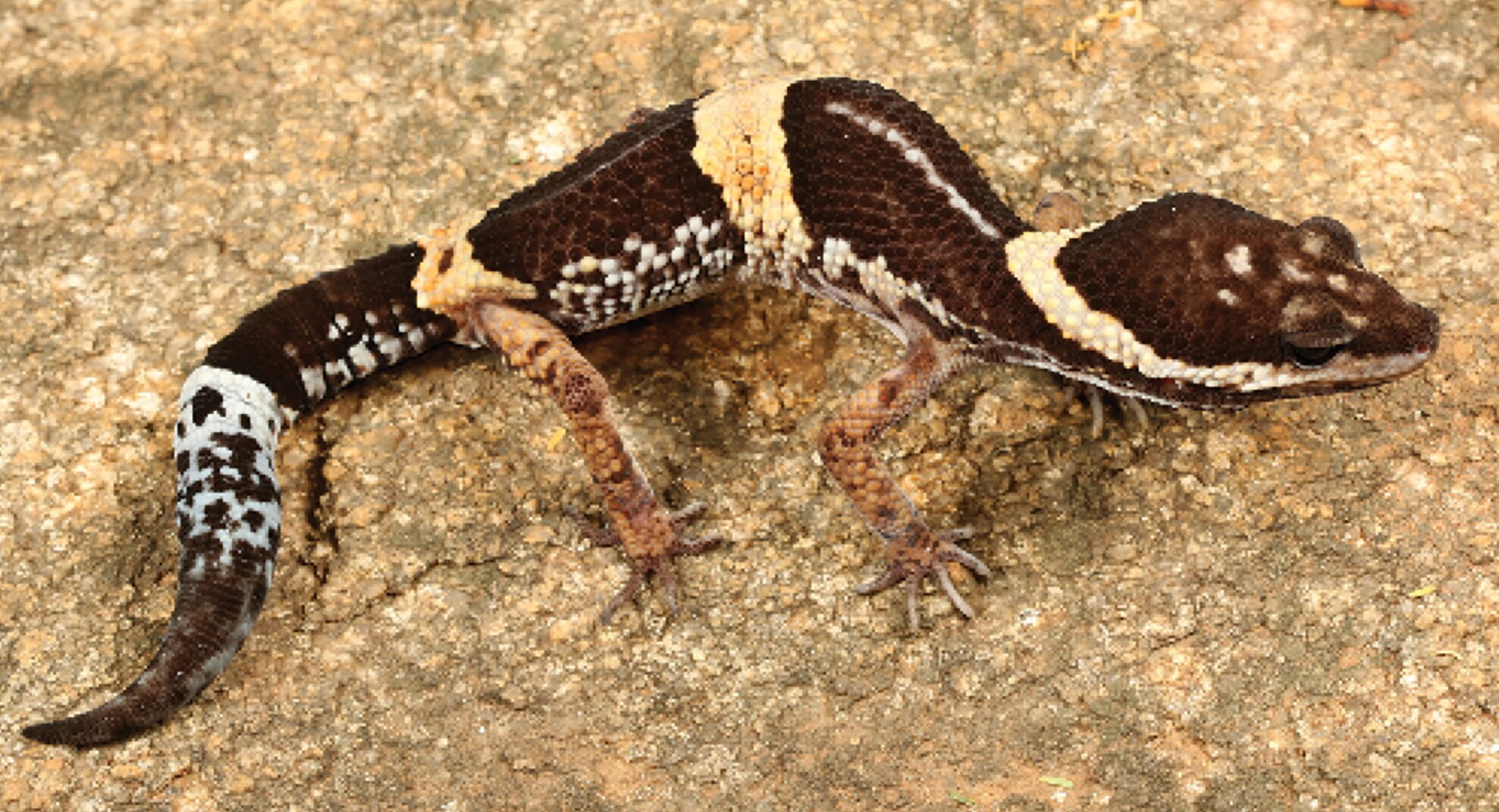

Deep in the forests of Odisha and Andhra Pradesh in India lives a colorful gecko species that only now revealed its true identity. Meet Eublepharis pictus, also known as the Painted Leopard Gecko.
In 2017, researchers Zeeshan A. Mirza of the National Centre for Biological Sciences in Bangalore and C. Gnaneswar of the Madras Crocodile Bank Trust in Chennai found a gecko in a water tank near a temple in Vishakhapatnam, Andhra Pradesh, during a field survey. Back then, they identified it as belonging to the East Indian Leopard Gecko species (Eublepharis hardwickii).
“The species appears to be common in the hill forests, but its distinctness was only confirmed by other researchers,” Zeeshan Mirza explains.
In a phylogenetic study, where they looked for the evolutionary history and relationships within and between the leopard gecko species in the genus Eublepharis, the researchers found that what had until then been considered a southern population of East Indian Leopard Gecko might be distinct enough to represent a new species.
Once they had molecular data they could work with, the team made morphological comparisons between the species, looking at specimens across natural history museums.
“These lizards have conserved morphologies and most species are quite similar in general appearance,” Zeeshan Mirza elaborates. “With a few characters based on the number of specimens examined, we described the species and named it the Painted Leopard Gecko—in Latin, Eublepharis pictus, for its colouration.” They published their discovery in the open-access scientific journal Evolutionary Systematics.
With this new addition, the gecko genus Eublepharis now contains 7 species. Two of them—E. pictus and E. satpuraensis—were described by Zeeshan Mirza.
The Painted Leopard Gecko measures 11.7 cm in length, which is somewhat large for a leopard gecko. The Brahmani River, which runs through the Eastern Ghats, separates it geographically from the East Indian Leopard Gecko, with which it shares a lot of similar traits.
The new species lives in dry evergreen forests mixed with scrub and meadows. It is strictly nocturnal, actively foraging along trails in the forest after dusk. While looking for food, it has been observed licking surfaces as it moves, which suggests it might use its tongue as a sensory organ.
Even though the Painted Leopard Gecko seems to be widespread across the state of Odisha and northern Andhra Pradesh, the researchers worry about its conservation. “The species is collected for the pet trade and even now may be smuggled illegally,” they write in their paper, which is why they refrain from giving out the exact locations where it may be found.
The authors believe the species would stand more of a chance against humans if more people knew it was actually harmless. To protect it, they suggest listing it as Near Threatened based on IUCN conservation prioritization criteria, until more is known about the size of its populations.
Further research may also encourage better protection of biodiversity in the area. “The Eastern Ghats are severely under-surveyed, and dedicated efforts will help recognize it as a biodiversity hotspot,” the authors conclude.
New species of gecko has been hiding in plain sight
Zeeshan A. Mirza et al, Description of a new species of leopard geckos, Eublepharis Gray, 1827 from Eastern Ghats, India with notes on Eublepharis hardwickii Gray, 1827, Evolutionary Systematics (2022). DOI: 10.3897/evolsyst.6.83290
Pensoft Publishers
Citation:
India’s relic forests reveal a new species of leopard gecko (2022, June 1)
retrieved 1 June 2022
from https://phys.org/news/2022-06-india-relic-forests-reveal-species.html
This document is subject to copyright. Apart from any fair dealing for the purpose of private study or research, no
part may be reproduced without the written permission. The content is provided for information purposes only.